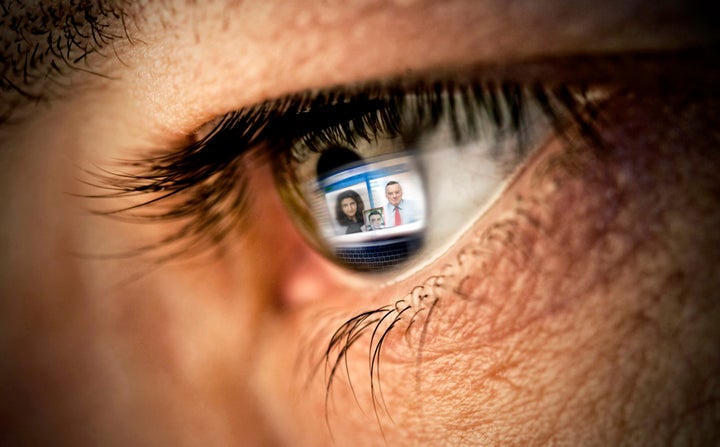
The Question: I stare at a computer screen all day for work. Is it ruining my eyesight?
The Answer: If you’ve ever looked at a computer screen for hours on end, you probably know what it feels like when your eyes are tired and your head is tense.
What you’re likely experiencing could be computer vision syndrome, also known as digital eye strain. The condition occurs from prolonged use of digital devices like laptops, tablets and smartphones, according to the American Optometric Association. It’s also exacerbated by poor office lighting, a glare from a screen and incorrect posture.
The syndrome could also lead to dry eyes: You blink 66 percent less when looking at a screen, causing your eyes to burn or become dry, reports the University of Iowa Health Care.
In other words, screens can certainly cause eye strain ― but are they culprit behind needing glasses or contacts? Not necessarily, according to Melanie A. Schmitt, an assistant professor of ophthalmology at the University of Wisconsin, Madison.
There has been an increase in cases of nearsightedness, but scientists don’t know if screens specifically are doing the damage, Schmitt told The Huffington Post.
When your eyes engage in near-work, such as reading an article on a website or scrolling through Instagram, small muscles work to put things in focus by changing the shape of the eyes’ lenses. Too many hours of near-work can cause a strain on your eye ― that dreaded tension and tiredness you feel. To say this effect is purely the result of computer screens is not yet clear, Schmitt says.
Several other factors can cause the phenomenon of nearsightedness, including genetic predisposition to the condition, too much time spent indoors or even your own circadian rhythm, according to the National Eye Institute. These are just the sort of confounding factors that can influence the outcomes of studies that inspect the relationship between vision-loss and screen time, Schmitt says.
The research about the long-term effects of digital devices on eye health is still developing, too. We know that looking at a screen for too long can cause eye strain, which is uncomfortable, but it does not have any long lasting or serious consequences, according to the Mayo Clinic.
A recent study by researchers in Madrid did find that LED lights ― those used in screens ― contributed to retina damage in the eyes of rats. This possibly gives credence to the idea that your devices could be doing some harm. However, more research is necessary to determine if the same effect occurs in humans.
All things considered, you’re bound to feel the consequences of not taking screen breaks throughout the day ― even if it’s not causing permanent damage. The best way to prevent and alleviate digital eye strain is to follow what eye doctors call the 20/20/20 rule: Take a 20 second break to look at something 20 feet away every 20 minutes. You can also adjust your computer to remove a glare if you have one and you can use eye drops to increase moisture.
Or, as Schmitt recommends, you can ditch your desk for a period of time altogether.
“I always tell patients and parents that come in to see me the importance of getting children outside to play and be exposed in natural lighting,” Schmitt said. This goes for adults, too: Going outside is an opportunity for the eyes to rest from near-work and look at distance instead, she explained.
Acting like a kid again to help out your eyes? Now that’s our kind of medicine.
H/T The Verge
“Ask Healthy Living” is for informational purposes only and is not a substitute for medical advice. Please consult a qualified health care professional for personalized medical advice.